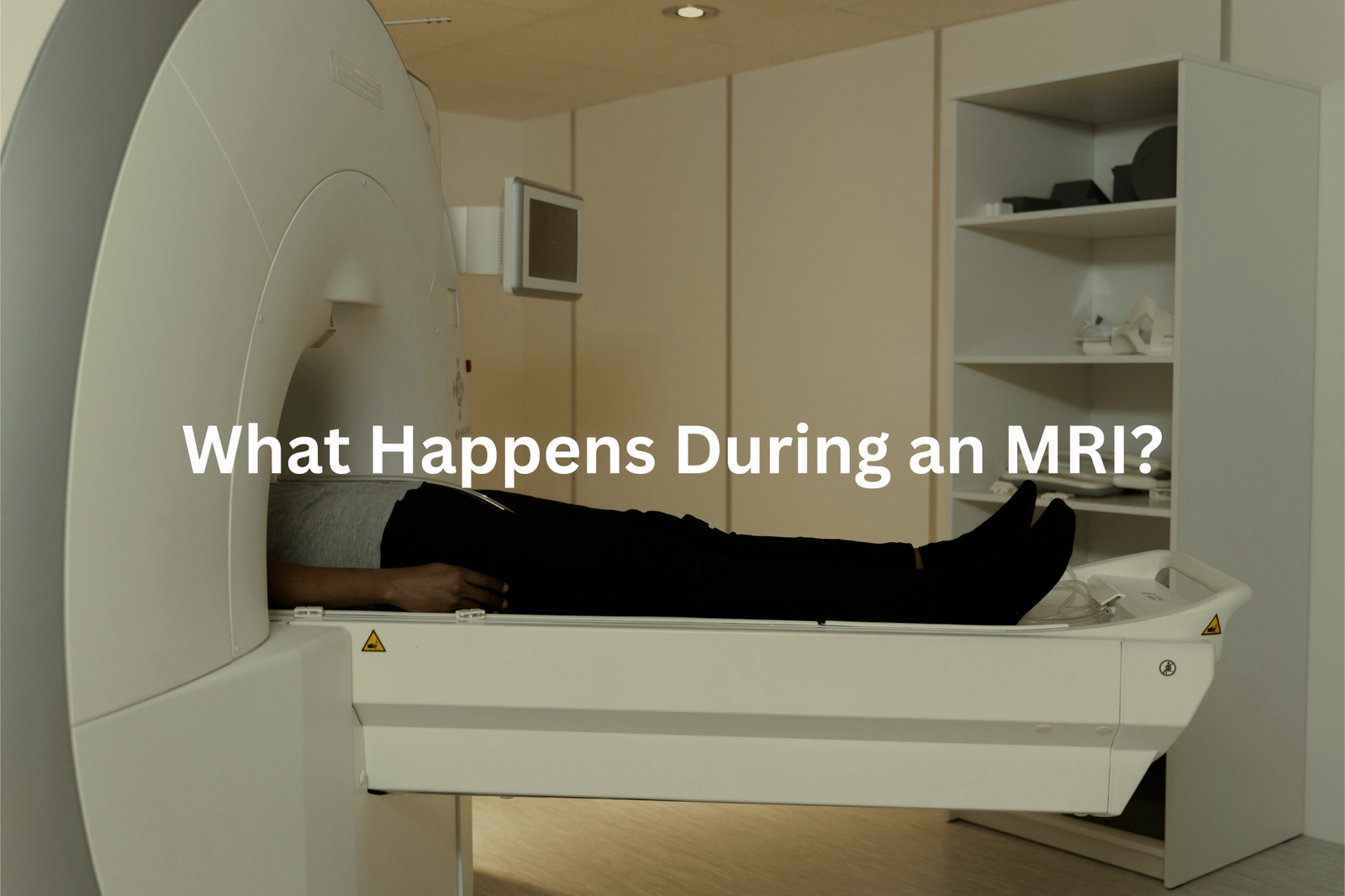Your simple MRI guide: Discover how these scans help doctors see inside your body, what they involve, and why they’re nothing to worry about.
MRI scans can feel a bit scary at first. Those big machines are noisy, but they help doctors see inside our bodies. It’s like finding pieces of a puzzle when something’s wrong. If you’ve had an injury or pain that doesn’t go away, your doctor might send you for an MRI.
This machine uses magnets and radio waves to create pictures of your organs and tissues. It doesn’t hurt, but you need to lie still for a while. Want to learn more about how MRIs work and what to expect? Keep reading to uncover all the details!
Key Takeaway
- MRI is a safe way to see soft tissues and organs in the body.
- You might feel a bit nervous, but there are ways to make it easier.
- Always tell the technician about any metal in your body before the scan.
Understanding MRI Scans
MRI, or Magnetic Resonance Imaging, is like a magical camera that lets doctors see inside your body without having to do any surgery. Unlike X-rays, which mostly show bones, MRI scans are great at revealing soft tissues like your brain, muscles, and other organs.
In Australia, MRI is very commonly used, with over 8,000 accredited imaging facilities offering this service. In fact, Aussies have undergone an incredible 436 million imaging studies in the past two decades, and MRI has been a significant part of that. Medicare even covered over 27 million imaging tests, including MRI scans, in the 2022-23 period.
What makes MRI so special is that it can create detailed images of soft tissues without using any radiation. Instead, it uses strong magnetic fields and radio waves, which are much safer for your body. The scans usually take between 15 to 60 minutes, depending on what the doctors need to see.
One of the best things about MRI is that it can help doctors diagnose all sorts of medical conditions, from brain disorders to sports injuries. The technology has been improving a lot too, with better image quality and faster scan times. So if you ever need to get an MRI, don’t worry – it’s a safe and effective way for your doctor to get a closer look inside your body.
What Happens During an MRI?

Getting an MRI is a bit like lying inside a giant donut that takes pictures of your insides. You start by lying down on a special bed that slides into the machine. The MRI uses a strong magnet and radio waves to create detailed images of your body (it’s like science magic). These waves make tiny particles in your body line up, and the machine captures that.
Before the scan, you’ll need to wear comfy clothes without any metal—zippers, buttons, or jewellery can interfere and might even be unsafe. The technician (the person running the machine) will ask you questions about your health to make sure everything’s okay. They might also give you headphones or earplugs because the machine makes loud banging noises.
The scan can take 15 minutes to a couple of hours. Staying very still is key. If you feel nervous, let the technician know—they’re there to help.
Why Choose MRI Over Other Scans?
Source: Dr. Paulien Moyaert.
MRI machines are pretty amazing, honestly. They’re different from X-rays or CT scans because they’re especially good at showing soft tissues. If someone’s got a sore knee, a dodgy back, or even a brain issue, an MRI can spot what’s going on. It’s like having a super-detailed map of the inside of your body.
One big plus is that MRIs don’t use radiation. That’s a big deal because radiation, while useful in some scans, can have risks if you’re exposed to too much. So, MRIs are a safer option for many people.
Now, X-rays are still great, especially for looking at bones (like when you break an arm), but they’re not as good for soft tissues. CT scans are a bit in-between, but MRIs really shine when it comes to muscles, ligaments, or even your brain. So, if your doctor suggests an MRI, it’s probably because it’s the best tool for the job.
Are There Any Downsides to MRI?
MRI scans are pretty amazing, but there are a couple of things to keep in mind. For starters, some people feel claustrophobic (that’s when tight spaces make you nervous). If you think this might happen, don’t stress too much. The technicians can help. They might teach you breathing tricks or even give you a mild sedative to keep you calm.
Another big thing is metal. If you’ve got metal in your body—like a pacemaker, joint replacements, or surgical clips—you must tell the technician. It’s super important for your safety. And don’t forget about jewellery! Rings, earrings, necklaces—leave them at home or take them off before the scan.
Oh, and one more thing: the machine is loud. They’ll probably give you earplugs or headphones to make it more comfortable. So, just relax and follow their instructions. It’s all about keeping you safe while they get those detailed images.
Different Types of MRI

There are different kinds of MRI scans because doctors need to check specific parts of the body. Each type is used to find certain problems, like a detective with the right tools for the job.
For example:
- Brain MRI: This one looks at the brain. It’s used to spot things like strokes, tumours, or even signs of multiple sclerosis.
- Spinal MRI: Focuses on the spine and spinal cord. It’s often used for back pain or injuries.
- Knee MRI: Perfect for sports injuries, like torn ligaments or damaged cartilage.
- Cervical Spine MRI: This checks the neck area. It’s helpful for nerve issues or trouble moving your neck(1).
Each scan works like a window into the body, helping doctors see what’s wrong without surgery. If you ever need one, it’s painless and usually takes about 30-60 minutes. Just stay still, and let the machine do its magic.
How to Prepare for Your MRI
Getting ready for an MRI isn’t as tricky as it sounds(2). Here’s how you can prepare:
- Wear comfy clothes: Pick something loose and without any metal, like zippers or buttons. Metal can interfere with the scan.
- Skip the jewellery: Leave rings, necklaces, and earrings at home. Even small bits of metal can cause issues.
- Chat with your doctor: If you’re feeling worried, let them know. They might have tips to help you stay calm.
- Complete the safety form: This form tells the technician about any metal in your body or medical devices you might have.
When you arrive at the MRI clinic, the staff will guide you through everything. They’re there to make sure you’re comfortable and understand the process. If you’ve got questions, don’t be shy—just ask. A little prep goes a long way to make the scan smooth and stress-free.
After the MRI: What’s Next?
Once your MRI is finished, the technicians will carefully check the images they’ve taken. These images are then sent to your doctor, who will need some time to review them properly. It might take a bit before your doctor discusses the results with you, but that’s completely normal—good things take time.
When your doctor is ready, they’ll explain what the MRI images show. They’ll also talk about any next steps, like follow-up tests or treatments, if needed. Don’t stress too much about what comes next; the scan itself doesn’t require any recovery time. You can return to your usual activities straight after.
Just make sure to listen closely to your doctor’s advice. If they recommend anything specific, like another test or a treatment plan, it’s important to follow through. The MRI is just one piece of the puzzle, helping your doctor understand how to best care for you.
MRI Guidelines and Safety
MRI scans in Australia are done under very strict safety rules. The Australian Radiation Protection and Nuclear Safety Agency (ARPANSA) makes sure these rules are followed(3). This means MRI machines are checked regularly to stay in good condition, and the staff operating them are properly trained. Safety is always the top priority, so patients can feel confident.
An MRI (Magnetic Resonance Imaging) is a medical test that uses strong magnets and radio waves to take detailed pictures of the inside of your body. It doesn’t use radiation like X-rays, so it’s considered very safe. Doctors use MRIs to look at things like your brain, spine, joints, or even your heart.
If you’re scheduled for an MRI, there’s no need to worry. Just follow the instructions from the staff, like removing metal objects, and you’ll be fine. It’s a painless way for doctors to help figure out what’s going on inside your body.
FAQ
What is an MRI scan?
An MRI (Magnetic Resonance Imaging) scan is a powerful medical imaging technique that uses a strong magnetic field and radio waves to create detailed images of the inside of your body. It allows doctors to see soft tissues, organs, and structures that are difficult to view with other imaging methods.
How does an MRI scanner work?
An MRI scanner is a large, tube-shaped machine that contains a powerful magnet. During an MRI, you lie inside the bore (opening) of the scanner, and the machine generates a strong magnetic field that aligns the hydrogen atoms in your body. Radio waves are then sent through the body, causing the aligned atoms to produce signals that are detected by the scanner. These signals are processed to create detailed images of the inside of your body.
What are the different types of MRI scans?
There are several different types of MRI scans, including brain MRI, spine MRI, knee MRI, and wide bore MRI. The type of scan you need will depend on the part of your body that requires examination and the specific medical condition being evaluated.
What are the safety considerations for MRI?
MRI is generally considered a safe procedure, but there are important safety considerations to keep in mind. The strong magnetic field in the MRI scanner can interact with certain metal objects, so it’s important to remove any jewellery, piercings, or other metal items before the scan. Patients with certain medical implants or devices may not be able to undergo an MRI, so it’s essential to discuss any safety concerns with your healthcare provider.
What happens during an MRI examination?
During an MRI examination, you will be asked to lie still on a table that slides into the bore of the MRI scanner. You may be given a contrast agent, a special dye that helps enhance the images. The scanner will make loud knocking or buzzing noises during the scan, but you will be provided with earplugs or headphones to help minimise the noise. The entire procedure typically takes 30–60 minutes, depending on the type of scan being performed.
How can I prepare for an MRI scan?
To prepare for an MRI scan, follow any instructions provided by your healthcare provider or the radiology clinic. This may include fasting for a certain period before the scan, avoiding certain medications, and removing any metal objects from your body. Inform your healthcare provider if you have any medical implants or devices, as these may affect the safety of the MRI scan.
What is a patient fact sheet for MRI?
A patient fact sheet for MRI is a document that provides important information about the MRI procedure, including what to expect, potential risks and safety considerations, and instructions for preparing for the scan. This fact sheet is typically provided to patients by their healthcare provider or the radiology clinic before an MRI appointment to help them understand the process and feel more comfortable with the procedure.
What is a Medicare rebate for MRI?
In Australia, Medicare provides a rebate for certain MRI services deemed medically necessary. If you have a valid referral from your general practitioner (GP) or specialist, you may be eligible to receive a portion of the cost of your MRI scan back from Medicare. The amount of the rebate can vary depending on the type of scan and your specific medical circumstances, so it’s important to check with your healthcare provider or the radiology clinic to understand your out-of-pocket costs.
Conclusion
MRI scans are a safe way for doctors to look inside our bodies. They’re really good at seeing soft tissues, which helps find problems. If you ever feel nervous about the machine, don’t worry—medical staff will be there to help you. They’ll explain what’s happening and answer any questions you might have. Just remember, it’s okay to ask for help if you need it. You’re brave for doing this! Stay calm, and everything will be alright.
References
- https://aci.health.nsw.gov.au/networks/medical-imaging/resources/magnetic-resonance-imaging
- https://aci.health.nsw.gov.au/__data/assets/pdf_file/0008/696131/ACI-MRI-scan-patient-information-sheet.pdf
- https://www.ranzcr.com/college/document-library/mri-safety-guidelines




